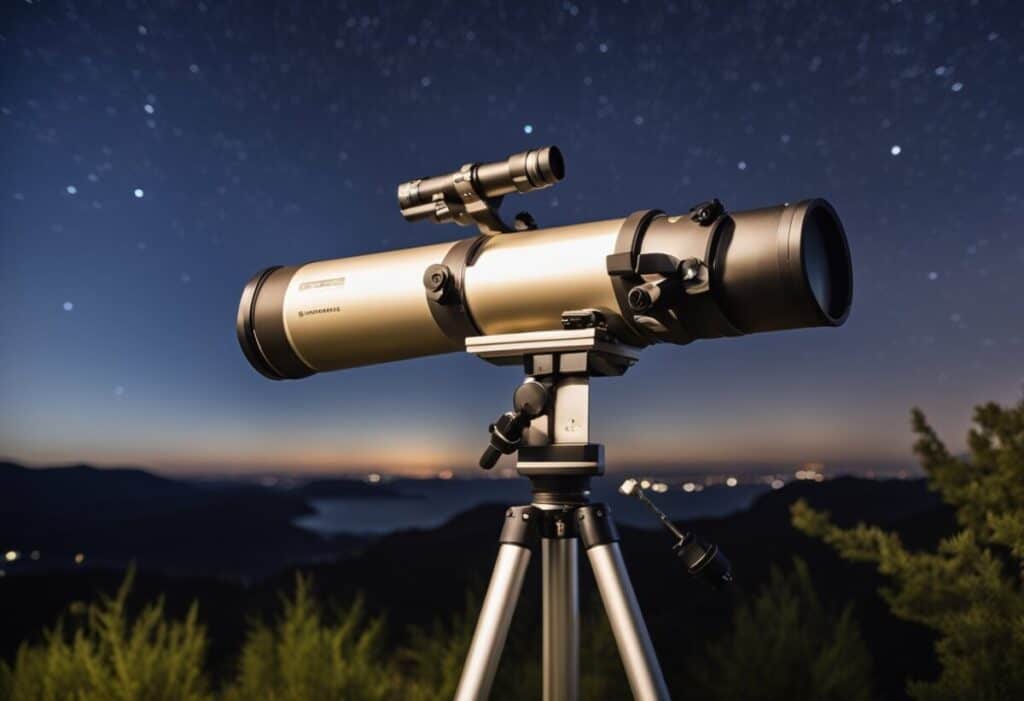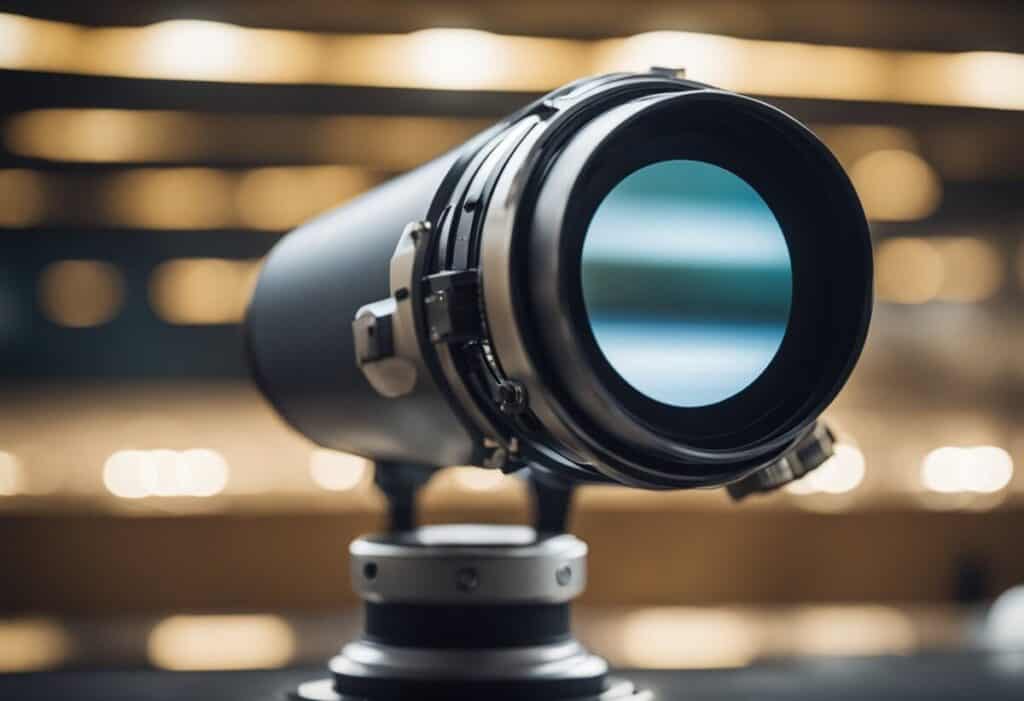Astronomy enthusiasts often invest in a quality telescope to explore the fascinating celestial objects above. One common question that arises when investing in a telescope is, “How long will my telescope last?” Understanding the lifespan of telescopes and the factors that contribute to their durability is essential when making decisions about which instrument to purchase.
A telescope can last between 10 to 30 years. High-quality telescopes with meticulous maintenance exceed 30 years. Lower-end models might get about 5 to 10 years. Regular cleaning, proper handling, and appropriate storage are essential for maximum lifespan above the overall average of 15 years.
Lets keep reading to see how to get more than the 15 year average out of our telescope. Following what is below will increase even the lesser quality models I believe, so let’s dig in.
How Can We Increase Above The Average Life Span
Various components of a telescope, including the optical and mechanical parts, contribute to its expected longevity. While well-built telescopes can last for many years with proper care, factors like build quality, maintenance, and exposure to the elements can all impact the telescope’s lifespan.
The following article will delve into these crucial aspects and offer insights into how to maximize the life of your valuable astronomical instrument.
It’s worth noting that the longevity of a telescope is not solely dictated by the initial quality of its components. Regular care and maintenance play a significant role in preserving the optical and mechanical performance of any telescope. In the next few sections, we will explore practical tips for maintaining your telescope, enabling you to glean the best possible experience from your stargazing adventures for years to come.
Telescope Durability Factors

Material Quality
The longevity of a telescope highly depends on the quality of materials used in its construction. Telescopes made from high-quality metals, such as aluminum and stainless steel, tend to be more durable and resistant to wear and tear.
On the flip side, those made from cheaper materials, such as plastic, might not last as long. Optics made from high-quality glass will also have a longer lifespan compared to lower-grade glass or plastic lenses. Below is a quick reference to price range and lifespan. You will find it doesn’t mean you can’t get 30 years from a $200 scope.
| Price Range | Expected Lifespan |
|---|---|
| Under $200 | 5-7 years |
| $200 – $500 | 7-12 years |
| $500 – $1000 | 12-20 years |
| Over $1000 | 20-30+ years |
Frequency of Use
The more often you use your telescope, the more wear and tear it will experience. However, with proper care and maintenance, a telescope can withstand regular usage for many years. Here are some general guidelines for different levels of use:
- Occasional use: 1-2 times a month
- Regular use: 1-2 times a week
- Frequent use: 3-5 times a week
Maintenance and Care
Proper maintenance and care play a significant role in prolonging the life of your telescope. Always follow the manufacturer’s recommendations for cleaning and maintenance, as improper handling can dramatically shorten its lifespan. Here’s a brief list of maintenance tips:
- Clean lenses and mirrors with proper cleaning solutions and non-abrasive cloths.
- Store the telescope in a cool, dry place to prevent damage from humidity.
- Use dust caps to keep dust and debris from entering the telescope when it’s not in use.
- Periodically check for signs of corrosion, especially in screw fittings and mounts.
Environmental Conditions
Environmental factors, such as humidity, temperature, and dust, can have significant effects on your telescope’s durability. Telescopes that are regularly exposed to harsh conditions, like extreme temperatures or high humidity, may experience a shorter lifespan. To mitigate these risks, make sure to:
- Store your telescope indoors whenever it’s not in use.
- Clean your telescope after using it in dusty or sandy environments.
- Ensure that your telescope is protected from sudden rain or snow.
Technological Obsolescence
Lastly, technological advances might render your telescope obsolete over time, as newer models with better capabilities become available. While this doesn’t directly affect the physical and visual durability of your telescope, it’s still an important factor to consider when evaluating its overall lifespan.
In summary, the durability of a telescope depends on multiple factors, such as material quality, frequency of use, maintenance and care, environmental conditions, and technological obsolescence. By taking good care of your telescope and considering these factors, you can maximize its lifespan and enjoy stargazing for years to come.
Enhancing Telescope Longevity

Taking good care of your telescope will greatly extend its lifespan. This section offers some useful tips to help you maintain your telescope in excellent condition. Below are three important focus areas that you should consider.
Proper Storage Solutions
Storing your telescope correctly is crucial to its longevity. Here are some recommendations that can help protect your telescope from damage:
- Storage location: Find a safe, dry, and dust-free space with minimal temperature fluctuations, such as an indoor cupboard or closet.
- Use a protective cover: Get a high-quality cover or case to shield your telescope from humidity, dust, and sunlight.
- Optimal positioning: Store your telescope horizontally or with the objective lens/mirror pointing downward to minimize dust settling on optical surfaces.
Following these guidelines ensures that your telescope remains in good condition when not in use.
Professional Servicing and Repairs
It is vital to regularly service your telescope to maintain its performance and prevent it from deteriorating. Some key points regarding servicing and repairs include:
- Routine cleaning: Perform a routine cleaning of the telescope’s optical surfaces and mechanical parts, such as the eyepiece and focuser.
- Professional servicing: Schedule periodic professional servicing for tasks like optical alignment or collimation, and lubricating mechanical parts. Or, learn how to do them on here!
- Prompt repairs: Seek professional help for those task out of your range when you see any signs of damage or issues.
These recommendations help keep your telescope in optimal working condition and extend its lifespan.
Upgrades and Modifications
Over time, you may want to improve your telescope’s performance with upgrades and modifications. Here are some suggestions to consider:
- Better eyepieces: Invest in quality eyepieces with a range of focal lengths and wider field of view.
- Enhanced finder: Choose a more advanced finder, such as a reflex sight or a computerized alignment system, for easier target acquisition. More on finders here
- Filtered views: Use special filters like solar, lunar, or light pollution to observe specific celestial objects. More on filters here
By implementing these upgrades, your telescope will continue providing enjoyable observations, and you can derive more value from your investment.
Frequently Asked Questions
What factors determine the longevity of my telescope?
The longevity of a telescope is influenced by various factors, such as construction, materials, care, and maintenance. Regular cleaning, proper storage, and alignment adjustments help extend a telescope’s lifespan. High-quality components and sturdy construction also contribute to a telescope’s durability.
When should I expect to replace or upgrade my home telescope?
The need to replace or upgrade a home telescope depends on the user’s growing interest and demands. Some may feel the need to upgrade to a more advanced model to access more advanced features or better view quality. It’s essential to consider personal goals, budget, and the type of objects to be observed, in which case upgrading may be advisable.
In other words…if you continue in astronomy, you will update as you can afford to. As with anything, you realize; I can achieve this, if I add that.
Can servicing extend the life of my astronomical equipment?
Yes, servicing can extend the life of astronomical equipment. Regular cleaning and maintenance will prevent dust, dirt, and moisture from deteriorating the components. Also, possible periodic professional servicing and collimation ensure the optical elements are in proper alignment, maintaining optimum performance.
How do weather conditions affect the lifespan of an outdoor telescope?
Weather conditions can significantly impact the lifespan of an outdoor telescope. Prolonged exposure to direct sunlight, humidity, extreme temperatures, and dust may lead to wear and tear, rust, or even damage to sensitive components. It is essential to protect the telescope with proper weatherproof covers and store it in a dry place when not in use.
What is the typical lifespan of professional space telescopes like Hubble and James Webb?
The lifespan of professional space telescopes like Hubble and James Webb is hard to predict, as they are subject to various factors, including mission objectives, funding, and technical challenges. The Hubble Space Telescope, launched in 1990, is still operational after multiple servicing missions. It’s original mission was stated for 15 years. With proper maintenance, it is well over 30 years now!
The James Webb Space Telescope is designed to last for at least ten years, but its exact lifespan will depend on its performance and the success of any potential servicing missions. Webb has a original life span of 5-1/2 years definite, to 10 years expected use. It is farther away, so maintenance may be an issue?
How can I assess the condition of a pre-owned telescope?
When evaluating a pre-owned telescope, inspect the optics for scratches, dust, and proper alignment, test the mount for smooth movement, and ensure that all accessories are in good working order. It’s also a good idea to test the telescope under real observation conditions, if possible. Consulting with experts or experienced users can provide valuable insights into the specific model’s performance and potential issues. Or you can read: What To Look For When Buying A Used Telescope


